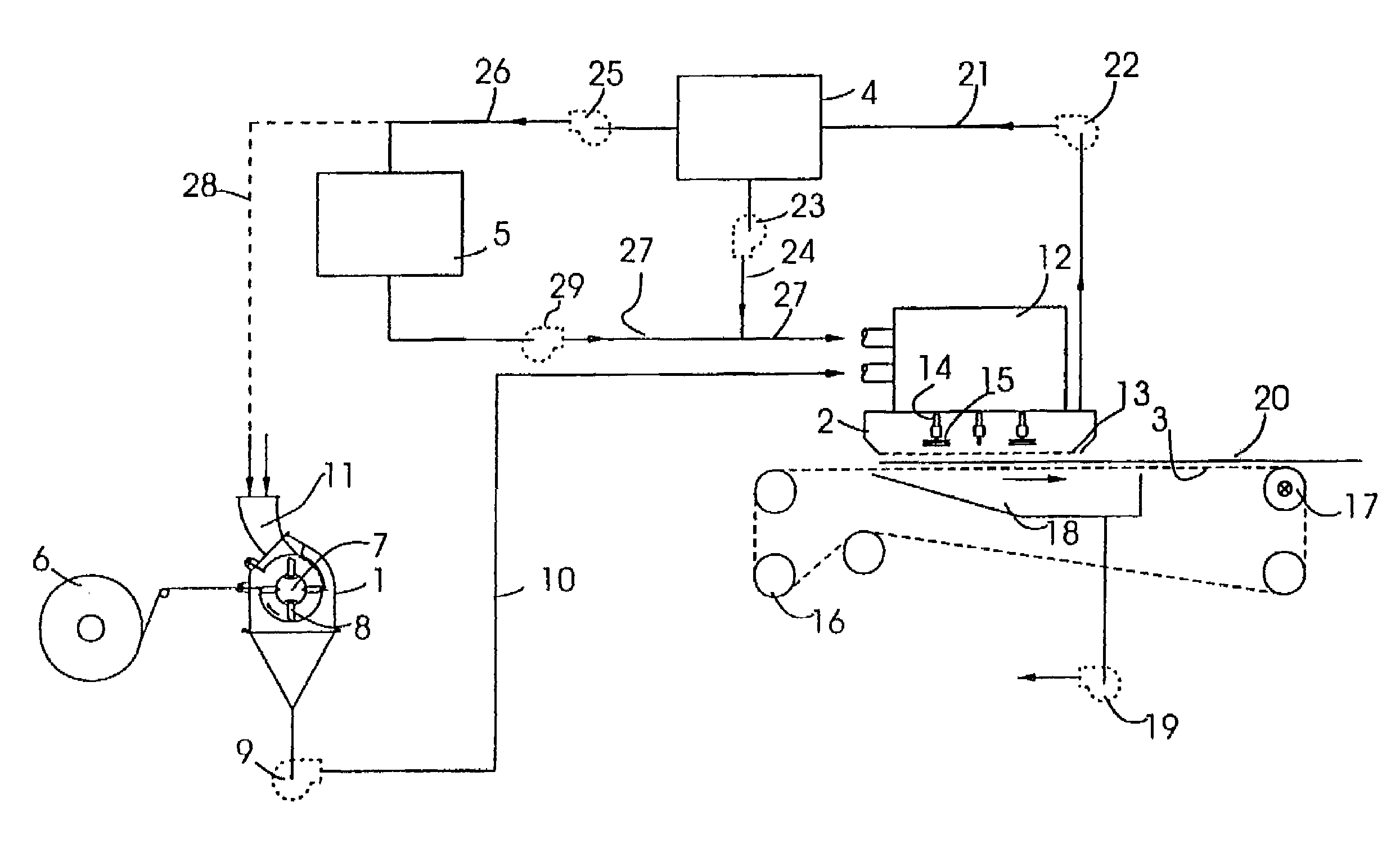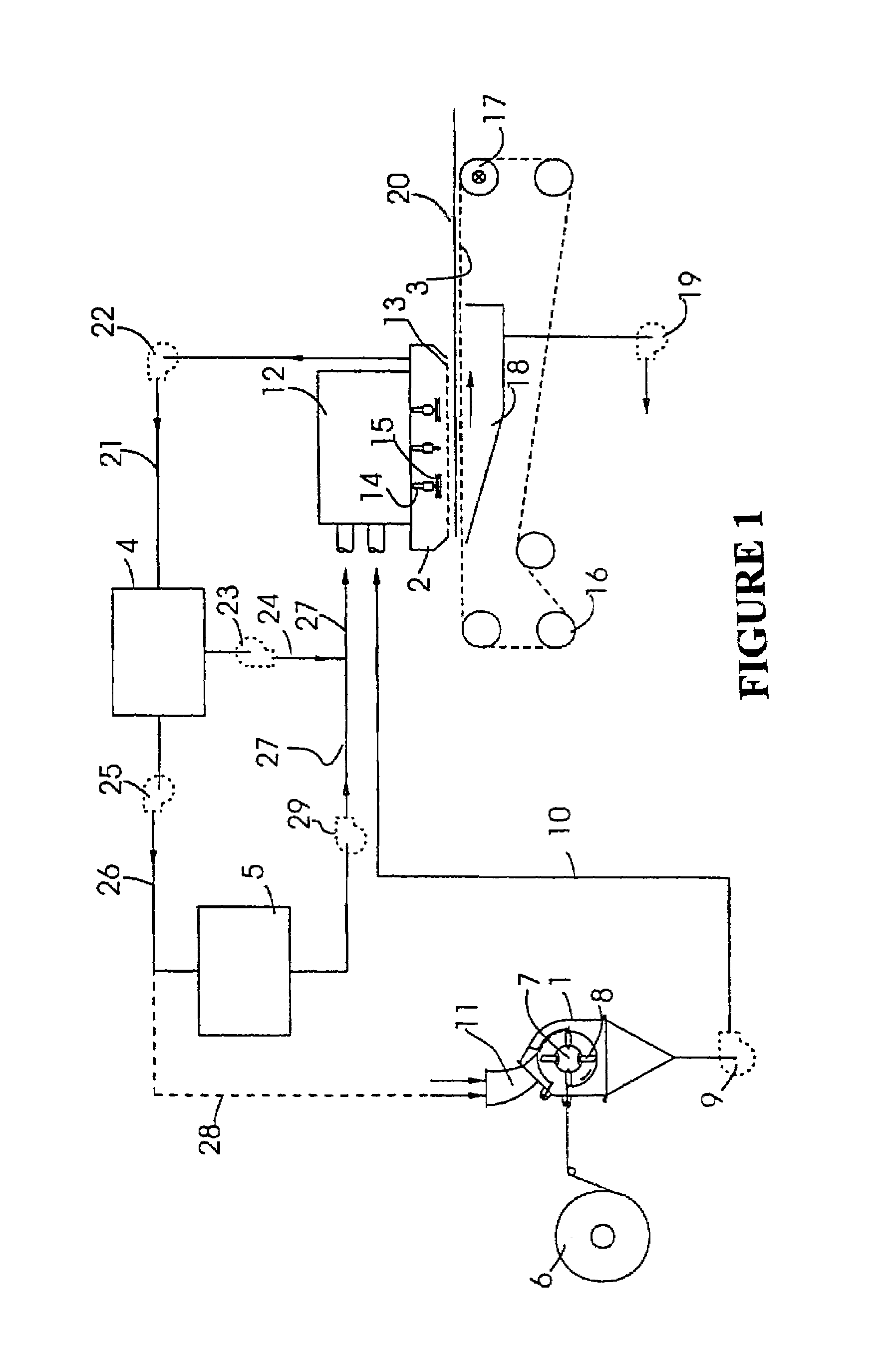Nits separator
a technology of nit separator and nit filter, which is applied in the field of nit separator, can solve the problems of uneconomical processing of this known plant, poor quality of the resulting product from a plant according to wo 8703626 a1, and inability to obtain a product essential free of ni
- Summary
- Abstract
- Description
- Claims
- Application Information
AI Technical Summary
Benefits of technology
Problems solved by technology
Method used
Image
Examples
Embodiment Construction
[0036]The plant includes a number of transport fans. These are drawn with dotted lines to indicate that one or several of these transport fans may be omitted in special variations of the construction shown.
[0037]The main components of the plant in the case shown in FIG. 1 are a known hammer mill 1, an existing forming head 2, and existing forming wire 3, which is mounted underneath the forming head, a nits separator 4 and a nits-opener 5.
[0038]Fibre material, which in this example is assumed to be cellulose pulp, is fed to the hammer mill 1 on a roller 6. The pulp is, in a known way, defibrated into single fibres in the hammer mill by means of a rotor 7, which has hinged swingles 8 and is rotating during operation.
[0039]By means of a first transport fan 9 and via a first duct 10, the fibres are channelled to the forming head 2 on an air stream, which is formed as the hammer mill, in the direction of the arrow, is supplied with air via an air intake 11.
[0040]The forming head 2 shown ...
PUM
| Property | Measurement | Unit |
|---|---|---|
| Energy | aaaaa | aaaaa |
Abstract
Description
Claims
Application Information
 Login to View More
Login to View More - R&D
- Intellectual Property
- Life Sciences
- Materials
- Tech Scout
- Unparalleled Data Quality
- Higher Quality Content
- 60% Fewer Hallucinations
Browse by: Latest US Patents, China's latest patents, Technical Efficacy Thesaurus, Application Domain, Technology Topic, Popular Technical Reports.
© 2025 PatSnap. All rights reserved.Legal|Privacy policy|Modern Slavery Act Transparency Statement|Sitemap|About US| Contact US: help@patsnap.com


